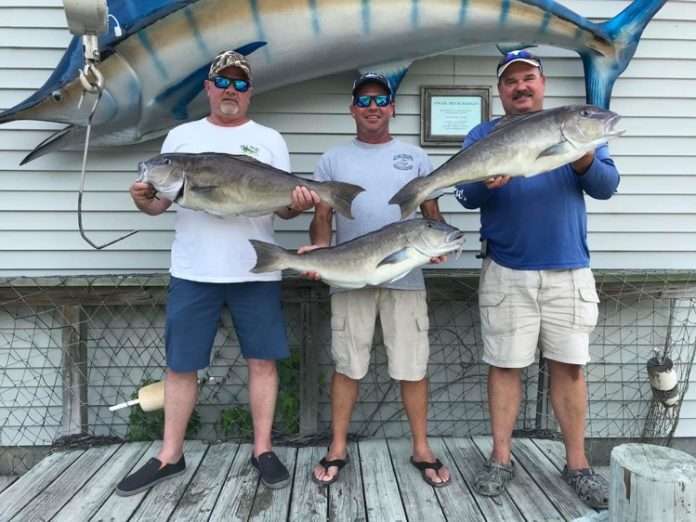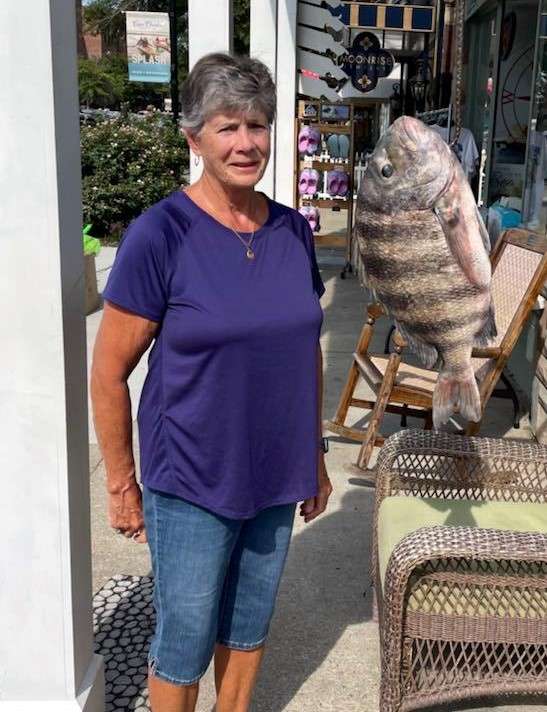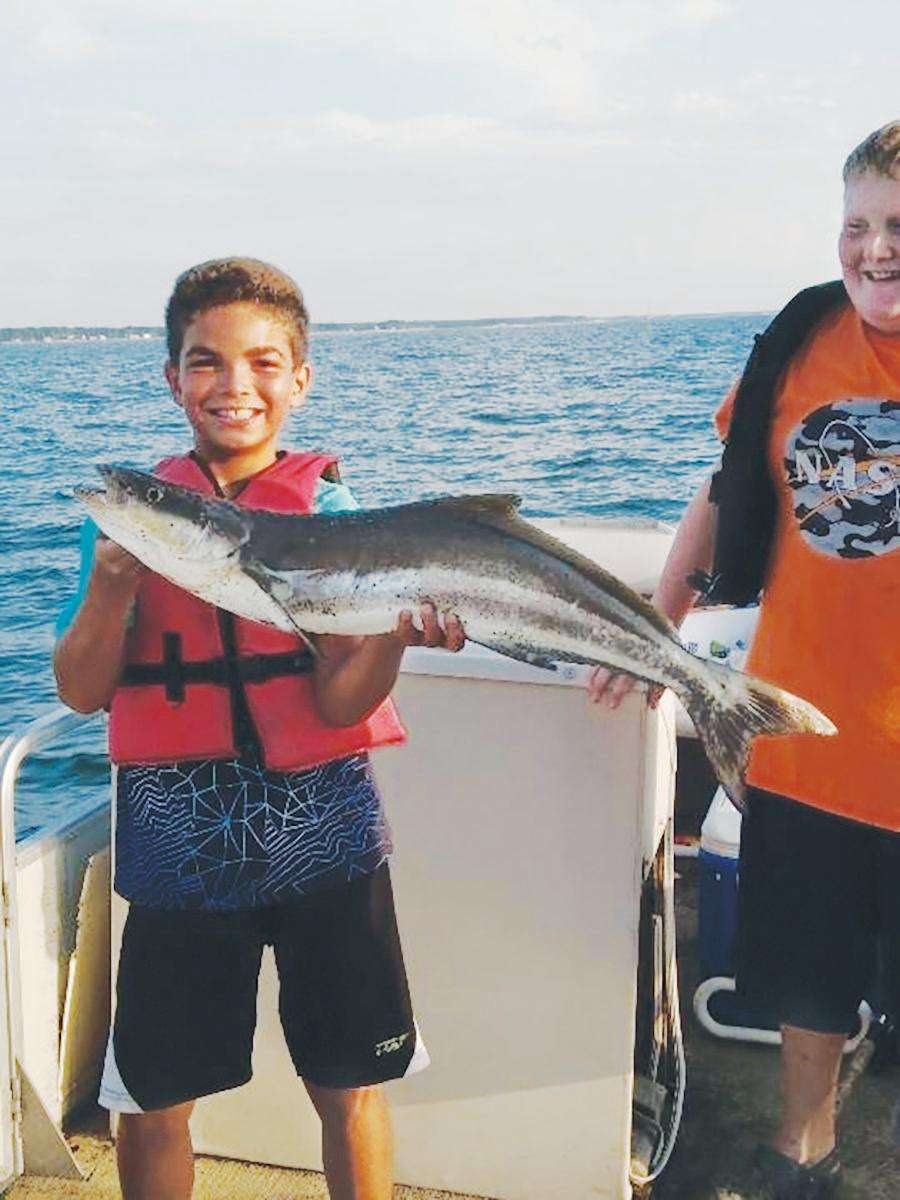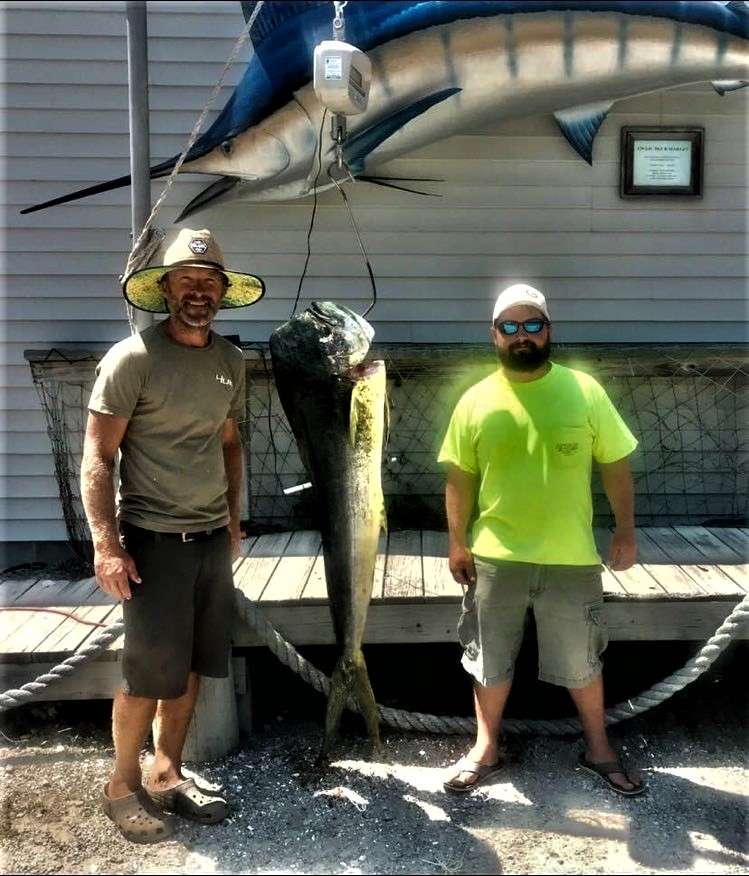
By Bill Hall —
Recent reports indicate that cobia and spadefish are beginning the early stages of their late summer and early autumn migration from the Chesapeake Bay into the Atlantic Ocean. Cobia schools have been seen traveling south in the waters of the lower bay, and there has been an increasing presence of cobia and spadefish observed around several of the inshore ocean buoys.
This migration pattern generally takes several weeks to conclude and we should see scattered cobia catches well into September. The lower Shore late summer run of large red drum has begun on the bayside, with fish showing up along the channel ledge between buoys 42A and 36A.
Upper Shore/Chincoteague – Captain Alan Ring, at the Sea Hawk Sports Center, reported the Maryland striped bass season is now open. Ring said bluefish catches have come from both Pocomoke and Tangier sounds. Spanish mackerel catches are coming from the main stem of the bay and near the target ships. Schools of red drum continue to show up sporadically. On the seaside, flounder catches are consistent during the last part of the incoming tide, especially in 6- to 15-foot water depths.
Pete Vasiliou, at Captain Steve’s Bait and Tackle, said the charter vessels have been limiting out on flounder inside of Chincoteague Bay. Schools of croaker are still arriving. Vasiliou said there is a healthy population of inshore sharks around. The inshore ocean wrecks and structures have been producing catches of spadefish, triggerfish, and flounder. Offshore action has consisted of yellowfin tuna on the troll, while deep droppers have done well with catches of tilefish.
Wachapreague – Captain Lindsay Paul, at Trident Tackle, said the flounder fishing off Wachapreague continues to be good, particularly in the clearer waters of the flood tide. Kingfish (whiting) and small croakers have been bycatches of the flounder fishery. Outside the inlet, Captain Paul reports black sea bass and flounder catches have been coming from over the inshore wrecks. Further offshore, marlin, tuna, and dolphin catches have come from the blue water. Sharks have been a problem at times, attacking the hooked yellowfin tuna before they can be brought to gaff.
Amanda Manzella, at the Wachapreague Inn, told me guests have been limiting out on flounder inside the inlet.
Lower Bay – Dez Louie, at Oceans East – Eastern Shore, reported recent windy conditions have prevented a number of anglers from venturing out into unprotected waters. Bottom fishing for cobia continues to be on the slow side. Sight fishermen reported that pods of surface cruising cobia are moving south in the Chesapeake Bay. Spadefish numbers remain good around the fourth island of the Chesapeake Bay Bridge-Tunnel, though the average size of the fish has been on the decline. The sheepshead run is reported to be still strong around the bridge-tunnel pilings and around the concrete ships.
Flounder fishing in the Ditch, along the little bridge, and near the high rise has been described as very good, with limits of flatfish and even a couple of citation-sized doormats boated. Spanish mackerel and bluefish catches are being made on trolled clark spoons when you can keep the lures clear of seaweed and ribbonfish. Deep dropping has produced catches of blue-lined tilefish, black sea bass, and the occasional barrelfish, while schools of dolphin (mahi) are patrolling the upper water column along the 50-fathom curve.
Jeb Brady, at Bailey’s Bait & Tackle, bragged about the recent sheepshead fishing, saying it has been “real good” over the past couple of weeks. Anglers have reported landing numbers of large sheepshead, with the cabbage patch and bridge-tunnel pilings identified as two of the top locations. Cobia fishing was described as “decent” with sight casting being more productive than bottom fishing. Casting live eels to surface cruising fish was the preferred offering.
Spadefishing was described as “solid” for anglers using clam baits at the fourth island, plantation light, and the cell. The late summer run of trophy red drum has begun, with big reds being caught on cut bait in the afternoons and evenings from buoy 42A down to 36A. Sand mullet (whiting) catches are coming from the area around the concrete ships, while ribbonfish and small croakers have been the most recent catches off the lower Shore piers.
Bill Hall was the first Eastern Shore resident to achieve Virginia Salt Water Master Angler Status. He has been named Virginia Saltwater Angler of the Year and Virginia Saltwater Release Angler of the Year and is a Virginia Press Association award-winning sports columnist.





